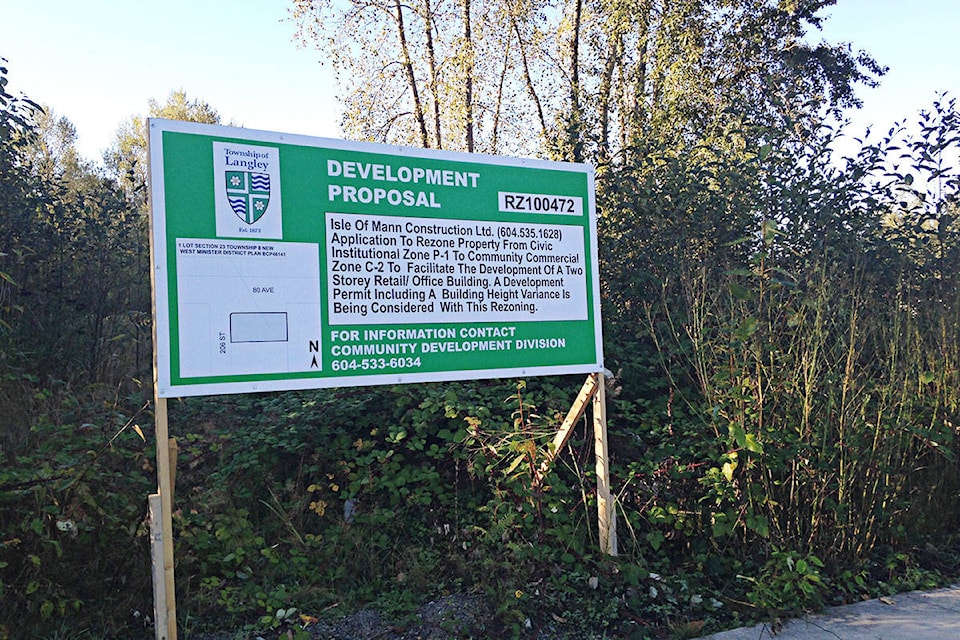Today I was hoping to talk about a sadly failed development up in North Langley, a place that was built with the best of intentions but which has deep-rooted flaws that, in many ways, fail its residents, merchants, and visitors.
I’m writing, of course, of Walnut Grove.
Willoughby is referred to so frequently (by people who don’t live there) as a failure that among certain groups in Langley it’s become accepted wisdom. Willoughby is a hell-hole, clearly the 35,000-plus people who live there were bamboozled somehow.
I live in Willoughby, and there are certainly things that aren’t perfect – the policy of widening streets piecemeal was always poorly thought out, and the lack of transit, unfortunately, isn’t going to be fixed anytime soon.
But what I tell a lot of people is that many of the apparent problems are growing pains. If I had to choose where I’d live in 10 years, I’d definitely take Willoughby over its neighbour north of the Trans Canada Highway.
Willoughby and Walnut Grove are, by historical accident, poised on opposite sides of the biggest change in urban design in the last century.
Following the Second World War, the pattern of suburban development and strict zoning-based division of land use swept North America.
Industry would be here, shops over here (spurring the spread of the shopping mall), and over here, on low-density lots and cul-de-sacs, would be residential. Tying them all together would be the newly-affordable family car and millions of acres of fresh blacktop.
For millennia, from ancient Rome to the age of steam, houses in cities had been closely packed. Even villages were compact little units. Roads were expensive to make and tough to maintain, and when travel was by foot or horseback, transportation was slow and moving goods expensive. So people lived above their shops and workshops.
As the industrial revolution arrived, this became less and less ideal. Some jobs had always been dirty and smelly, but now smokestacks and foundries and chemical works were suddenly cheek-by-jowl with workers, who had to breathe all that stuff every day.
The rich, of course, retired to their country estates – a big house on a big sward of grass surrounded by gardens and lots of clean air.
When the car came along, that dream was downsized, packaged, and sold to the masses. Every family with their own little country manor and patch of lawn, suitable for parents and 2.5 children. Cul-de-sacs and dead-end streets promoted quiet and forced slow driving.
It can be a pleasant life, out in suburbia. But the drawbacks became apparent over the following decades.
Massive highways had to tie the suburbs to the blocks of offices and factories, which were suddenly distant. Traffic jams and air pollution spiked. Walkability declined to zero in most new neighbourhoods – every trip requires a car.
The backlash began as early as the 1960s, but it took until the late 1980s and early 1990s before it had a name – the New Urbanism. By the time it was in full swing, Walnut Grove was already laid out.
Take a look at Walnut Grove, and its street map. Virtually every commercial entity lies along the spine of 88th Avenue, or on 200th Street. Most community amenities – and it has many! – are also near that route, including the rec centre and pool.
North of that, it’s all houses, interrupted by the occasional elementary school or church.
Not only do you have to drive everywhere if you live more than a couple blocks from 88th Avenue, you can’t drive in a straight line.
Between 213th Street and 216th Street, for example, there are no east-west roads over the mile from 88th to 96th Avenues. Getting from 88th to 96th anywhere between 208th and 216th requires a twisting route that bends and forks.
Regular bus service? Good luck. You’ll always have a hike to the nearest bus stop.
Many neighbourhoods are small pockets, loops with one or two outlets only.
If you like suburbia, it’s comforting. If you don’t, it feels like being trapped in a maze.
Willoughby is easier to navigate. It has more commercial zones planned at its major nodes and serving more sub-neighbourhoods, from 200th east to 216th.
It is far from perfect. It is still more suburban than I would like, and it could use more micro-commercial zones, every two blocks or so. More neighbourhood restaurants and pubs, cultural centres and community halls, and corner grocery stores would help fill in the gaps – but aren’t in the plans.
But the community as it exists already aims higher than Walnut Grove when it comes to walkability, mixing residential and commercial, and creating the kind of grid-system streets that can more easily support frequent public transit.
It needs to do better still. Because the other thing about Willoughby – when it’s built out, it will have an average density more comparable to East Vancouver than older areas of Langley. If we don’t want to pave the ALR and flatten every tree for twenty miles east of here, we need New Urbanism communities, because urban is where our future lies.
